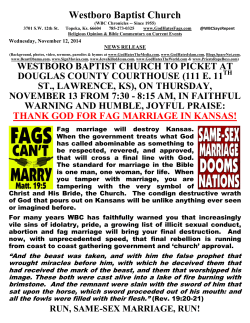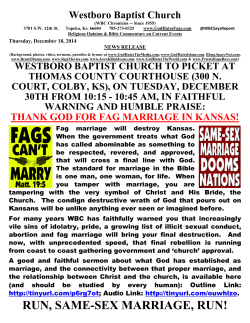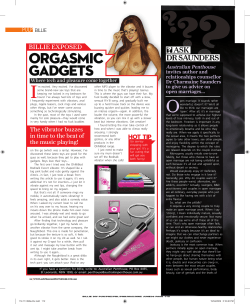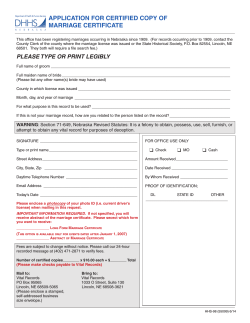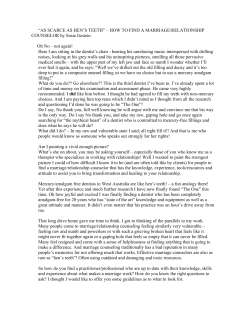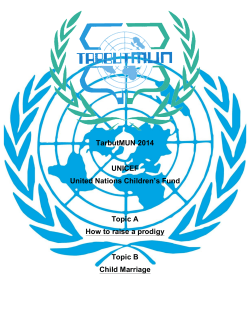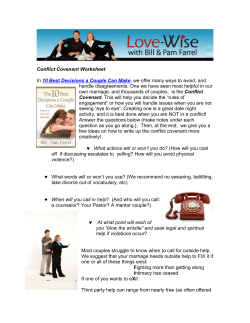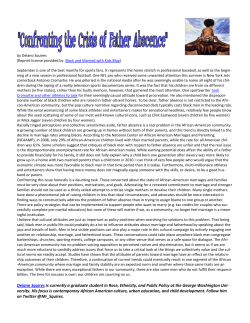
Section 25 of New York`s Domestic Rel
FAMILY LAW — MARRIAGE REQUIREMENTS — NEW YORK SUPREME COURT HOLDS STATUTORY EXCEPTION TO MARRIAGE LICENSE REQUIREMENT GENERALLY INAPPLICABLE TO OUTOF-STATE MARRIAGES. — Ponorovskaya v. Stecklow, 987 N.Y.S.2d 543 (Sup. Ct. 2014). Section 25 of New York’s Domestic Relations Law (DRL) provides that, notwithstanding another section’s mandate that all couples obtain a marriage license before they may be lawfully married, no marriage will be “render[ed] void by reason of a failure to procure a marriage license” if it otherwise complies with New York’s requirements.1 One of these requirements is that a marriage must be properly solemnized to be valid, and under section 11 of the DRL only certain individuals may solemnize marriages.2 Recently, in Ponorovskaya v. Stecklow,3 a New York trial court held that section 25 can validate an out-of-state marriage that is otherwise invalid under the laws of the jurisdiction where it took place only in “extraordinary circumstances.”4 The court reasoned that section 25, enacted when citizens understood traditional religious marriage ceremonies to create legal marriages apart from any government requirements, is outdated in light of society’s shift toward nontraditional ceremonies and civil marriages.5 Because its holding as to section 25 was dispositive, the court had no need to determine whether the marriage, which was solemnized by a minister ordained online through the nontheistic Universal Life Church (ULC),6 was valid under section 11; however, similarly taking into account society’s contemporary understanding of marriage in analyzing section 11 supports an interpretation that authorizes ULC ministers to solemnize marriages. In 2010, New York residents Anya Ponorovskaya and Wylie Stecklow held their marriage ceremony at a resort in Mexico.7 Stecklow’s cousin, a ULC-ordained minister, officiated.8 Though the resort supplied them with information on local marriage requirements, ––––––––––––––––––––––––––––––––––––––––––––––––––––––––––––– 1 2 N.Y. DOM. REL. LAW § 25 (McKinney 2014). Id. § 11 (providing that “[n]o marriage shall be valid” unless solemnized by an authorized person). 3 987 N.Y.S.2d 543 (Sup. Ct. 2014). 4 Id. at 555. 5 Id. at 552–55. 6 The ULC, founded by Kirby J. Hensley in California in 1959, professes to have “no traditional doctrine” and to “only believe[] in that which is right.” Robert E. Rains, Marriage in the Time of Internet Ministers: I Now Pronounce You Married, but Who Am I to Do So?, 64 U. MIAMI L. REV. 809, 815 (2010) (quoting Universal Life Church, Inc. v. United States, 372 F. Supp. 770, 773 (E.D. Cal. 1974)). It grants ministerial credentials to any individual regardless of training or belief, often through an Internet transaction. See id. 7 Ponorovskaya, 987 N.Y.S.2d at 544. 8 Id. at 544–45. 1868 2015] RECENT CASES 1869 Ponorovskaya and Stecklow indicated to the resort that their ceremony would be purely symbolic and went on to “ignore[] each and every step” of the required process.9 Upon returning to New York, they neglected to obtain a New York marriage license.10 In 2013, Ponorovskaya commenced an action for divorce, seeking financial relief, and Stecklow filed a motion to dismiss on the ground that the marriage was never legal.11 At oral argument, Ponorovskaya conceded the marriage’s invalidity in Mexico but construed section 25 as waiving their obligation to obtain a marriage license or “compl[y] in any respect” with Mexican law, thereby validating the marriage in New York as long as it complied with the DRL’s requirements.12 Stecklow contended that section 25 did not apply to marriages performed outside of New York and that comity dictated that New York recognize only marriages that are valid where they are performed, thus foreclosing New York’s recognition of the marriage. Even if section 25 did apply, he argued, his ULC-ordained cousin had no authority under the DRL to solemnize the marriage, rendering the marriage invalid under New York law as well.13 The court granted the motion to dismiss, finding the marriage to be invalid.14 Justice Cooper began with a comity analysis, holding that because a marriage’s validity “is determined by the laws of the state or country in which it was performed,”15 this marriage, “an absolute nullity” under Mexican law, was presumptively invalid in New York.16 Though Ponorovskaya urged accordance with the decision in In re Farraj,17 in which a New York appellate court applied section 25 to affirm the validity of an otherwise invalid out-of-state marriage,18 Justice Cooper distinguished Farraj on the grounds that Ponorovskaya and Stecklow were under no religious obligation to hold their ceremo- ––––––––––––––––––––––––––––––––––––––––––––––––––––––––––––– 9 Id. at 545. Ponorovskaya claimed that she had no knowledge of the requirements, though the court found her knowledge ultimately irrelevant given that “the wedding ceremony that ensued in no way complied with the dictates of the law of Mexico.” Id. 10 Id. at 546. 11 Id. at 546–47. Stecklow originally moved to dismiss for lack of subject matter jurisdiction, but Ponorovskaya agreed to proceed as if he had moved to dismiss for failure to state a cause of action. Id. at 544 n.1. 12 Id. at 547. 13 Id. Specifically, Stecklow claimed that the ULC “is not a real religion” and that section 11 thus did not authorize ULC ministers to solemnize marriages. Id. 14 Id. at 557–58. 15 Id. at 548. 16 Id. at 549 (quoting Código Civil para el Estado de Quintana Roo [Civil Code of Quintana Roo], 8 de Octubre de 1980 (Mex.)) (internal quotation marks omitted). 17 900 N.Y.S.2d 340 (App. Div. 2010). 18 Id. at 341. 1870 HARVARD LAW REVIEW [Vol. 128:1868 ny outside New York,19 did not sign any formal certificate or record,20 and could not have had a “justified expectation” that their informal, “pseudo-Jewish” ceremony yielded a legal marriage.21 Justice Cooper then found that section 25’s outdated rationale suggested that the law be invoked sparingly. Describing it as an “arcane provision,”22 he first remarked that its obscurity “is a good thing indeed” since it effectively vitiates New York’s marriage license requirement, a vital tool for state recordkeeping.23 He explained that when section 25 was enacted in 1907, organized religion played a stronger role in society and people reasonably expected weddings performed in traditional places of worship, with “structured . . . and public proceedings,” to create legal marriages.24 State regulation of marriages was still “relatively new,” and section 25 “protect[ed] the old ways by insuring that the validity of a proper religious marriage would not be jeopardized by the failure to obtain a marriage license.”25 Today, however, Justice Cooper noted, couples are increasingly turning to civil or informal religious ceremonies, thereby reducing the “need to protect the sanctity of traditional, formal religious marriages from the threat of government imposed legal requirements.”26 Deeming Farraj unusual in that a “manifest injustice” would have resulted had section 25 not protected the marriage’s validity, Justice Cooper held that section 25 could circumvent the rule of comity only in these “most extraordinary of circumstances.”27 In dicta, after explaining that this trend toward less formal ceremonies only heightens the state’s interest in requiring couples making such a “serious decision” as marriage to ––––––––––––––––––––––––––––––––––––––––––––––––––––––––––––– 19 See Ponorovskaya, 987 N.Y.S.2d at 549–50. In contrast, the Farraj couple had held their ceremony at a relative’s New Jersey home to comply with Islamic law. Id. at 549. 20 Id. at 550. Whereas the couple in Farraj had signed an Islamic marriage certificate, arguably satisfying the DRL’s aim of promoting formal recordkeeping, the only record of this ceremony was a wedding video. Though Justice Cooper conceded that the video “vividly depicts the ceremony — with the participants and guests dressed in white, the couple taking their vows, the palm trees swaying, the white sand glistening, and the Black Eyed Peas’ ‘I’ve Got a Feeling’ playing,” he questioned whether it amounted to a sufficiently formal record. Id. 21 Id. at 544, 550–52. 22 Id. at 552. 23 Id. at 553. Justice Cooper noted that it would certainly be problematic if “all those couples who patiently wait on the long lines at the Marriage License Bureau . . . learn that, despite the instructions they were given, a marriage license is not really a requirement for marrying after all.” Id. 24 Id. 25 Id. at 554. 26 Id. Justice Cooper even postulated that the traditional religious ceremony, “with the attendant formality, recognition in the community and ecclesiastical record-keeping . . . is now on its way to being the exception.” Id. 27 Id. at 555. 2015] RECENT CASES 1871 “take the time and exert the effort needed to obtain a wedding license,” he called for section 25’s amendment or repeal.28 Though his interpretation of section 25 was dispositive of the marriage’s validity, Justice Cooper briefly addressed the authority of ULC ministers to solemnize marriages. Analyzing section 11’s requirements, he found no clear answer as to whether a ULC minister fits within the statute’s definition of “clergyman” or “minister.”29 He reviewed the conflicting decisions of the two appellate departments that have addressed this matter and, after determining that marriages solemnized by ULC ministers (and ministers of other online religions30) are prevalent in New York,31 posited that this unsettled case law has “broad implications for married people across the state.”32 Stopping short, however, of “attempting to determine what is a ‘real’ religion and what is not, [which] would seem to ‘necessarily involve an impermissible inquiry into religious doctrine or practice,’”33 Justice Cooper concluded with an observation that while courts have construed section 25 to excuse the lack of marriage license when they felt the ceremony had the weight of a traditional religious practice, “[t]his significance may be trivialized when the wedding is conducted by the bride’s cousin who is a Dudeist Priest.”34 Justice Cooper’s reliance on society’s changing understanding of marriage in his analysis of section 25 encourages similar evaluation of New York’s solemnization requirements. Just as Justice Cooper assessed section 25 in light of the fact that citizens now expect that they ––––––––––––––––––––––––––––––––––––––––––––––––––––––––––––– 28 29 Id. at 557. See id. at 555–57. Section 11 provides that marriages must be solemnized by certain judges, other specified state officials, or “[a] clergyman or minister of any religion . . . as defined in section two of the religious corporations law.” N.Y. DOM. REL. LAW § 11 (McKinney Supp. 2014). Section 2 of the Religious Corporations Law states that these terms “include a duly authorized pastor, rector, priest, rabbi, and a person having authority from . . . the rules and regulations of the governing ecclesiastical body . . . or otherwise from the church or synagogue to preside over and direct [its] spiritual affairs.” N.Y. RELIG. CORP. LAW § 2 (McKinney Supp. 2014). 30 See Ponorovskaya, 987 N.Y.S.2d at 556–57. These other “religions” include the Church of the Flying Spaghetti Monster, which ordains “pastafarian” ministers, and the Church of the Latter-Day Dude, which derives from the movie The Big Lebowski and refers to its beliefs as “Dudeism.” Id. 31 See id. at 556. Evidence of the ULC’s popularity included a perusal of the Sunday New York Times’s wedding announcements as well as a declaration of just one of the many competing ULC websites that it had registered over 1,500 ministers in New York. Id. Per another ULC website, the ULC has ordained over 20 million ministers worldwide, UNIVERSAL LIFE CHURCH MONASTERY, http://www.themonastery.org/ (last visited Mar. 1, 2015) [http://perma.cc/MN5K -5GMC], leading one observer to quip that “it [thus] appears that the ULC is claiming to have roughly fifty times more ordained ministers than the Catholic Church has priests.” Rains, supra note 6, at 817. 32 Ponorovskaya, 987 N.Y.S.2d at 556. 33 Id. at 557 (quoting Rodzianko v. Parish of the Russian Orthodox Holy Virgin Prot. Church, Inc., 984 N.Y.S.2d 614, 615 (App. Div. 2014)). 34 Id. 1872 HARVARD LAW REVIEW [Vol. 128:1868 must obtain marriage licenses from the state, courts should interpret section 11 in a way that accords with modern ideas and expectations about marriage. Taking account of these ideas when considering the state’s interest in protecting citizens’ reasonable expectations and preserving the seriousness of marriage supports interpreting section 11 to authorize ministers of online religions such as the ULC to solemnize marriages; First Amendment constraints and the “broad implications” of the ULC’s popularity further show such an interpretation to be not only culturally appropriate but also pragmatic. Today, the popularity and social acceptance of marriages solemnized by ULC ministers as well as rampant misinformation concerning their legal status have engendered reasonable expectations that these marriages are valid. As Justice Cooper noted, these marriages are becoming ubiquitous, which in itself creates an understandable expectation of validity.35 In addition, the ULC’s confident proclamation on its websites that its ministers can perform legal marriages could deceive “even a reasonably intelligent (and suspicious) person” into believing that such marriages are, in fact, legal.36 Then, inconclusive case law37 and incorrect popular interpretations of it38 fail to correct citizens’ conclusions that these marriages are valid. Perhaps most misleadingly ––––––––––––––––––––––––––––––––––––––––––––––––––––––––––––– 35 See Devan Sipher, Great Wedding! But Was It Legal?, N.Y. TIMES (Aug. 5, 2007), http://www.nytimes.com/2007/08/05/fashion/05marry.html (reporting on a recently married couple — a lawyer and a law student, no less — who “assumed it was legal” after hearing of other weddings solemnized by ULC ministers). One ULC website declares that ULC ministers number 15,000 in New York State and perform about 100 weddings each month in New York City alone. Perform a Wedding in New York City, UNIVERSAL LIFE CHURCH (Mar. 13, 2012), http://www.ulc.org/2012/03/perform-a-wedding-in-new-york-city/ [http://perma.cc/M38J-FBUL]. These marriages have even been portrayed on television as legitimate — an episode of the popular sitcom Friends in which one character obtains ministry credentials online may in fact have been a major catalyst for the ULC’s popularity. See Sipher, supra. 36 Rains, supra note 6, at 834. 37 The New York Court of Appeals, New York’s highest court, has never considered the issue; only two of the four lower appellate jurisdictions have ruled on the matter, and they disagree. The Second Department held marriages solemnized by ULC ministers to be invalid in Ranieri v. Ranieri, 539 N.Y.S.2d 382, 388 (App. Div. 1989), while the Third Department in Oswald v. Oswald, 963 N.Y.S.2d 762 (App. Div. 2013), explicitly rejected the Second Department’s reasoning and held that these marriages may be valid depending on facts found on remand, id. at 763, 765. 38 There has been surprisingly little media coverage of the issue, and the information that the media has relayed is not always accurate. For example, the New York Times reported that while New York State recognizes marriages solemnized by ULC ministers, there are simply a few counties — citing just five of the ten in the Second Department’s jurisdiction — that do not. See Vincent M. Mallozzi, Reconsidering the Rev. Best Friend, N.Y. TIMES (Nov. 16, 2012), http:// www.nytimes.com/2012/11/18/fashion/weddings/making-sure-that-online-officiant-is -legal.html. Thus, the article continues, by deliberately obtaining a marriage license from Monroe County (in the Fourth Department) instead of Suffolk County (in the Second Department), a couple using a ULC minister “ma[de] their wedding a legal union after all.” Id. The article fails to recognize that, while the Fourth Department’s silence may appear to permit these marriages, it is not definitive that New York State recognizes them — if it were, counties could not maintain otherwise — and they thus remain vulnerable to legal challenge. 2015] RECENT CASES 1873 to New York City residents, the New York City Clerk’s Office accepts these marriages as valid — yet it does not advertise that if the state’s highest court ever holds otherwise, that holding supersedes its policy.39 Given these signals of legitimacy, it is hardly unreasonable that couples who choose ULC ministers to officiate expect their resulting marriages to be legal. As Justice Cooper explained, lawmakers once found it important to protect citizens’ reasonable expectations of the validity of traditional religious ceremonies; protecting reasonable expectations of the validity of marriages solemnized by ULC ministers is now similarly essential. In discussing Farraj, Justice Cooper specifically referenced the couple’s “justified expectation” that they were married because they had participated in a formal religious ceremony and believed and expected that it resulted in a legal marriage.40 Now that a reasonable expectation of validity attaches to nontraditional ceremonies as well, one can easily imagine couples who completed all necessary state requirements but whose marriages were solemnized by ULC ministers to hold similar beliefs that they are legally married. Not to recognize these marriages when such couples reasonably expect and believe them to be valid would seem to work just as much of a “manifest injustice” as the one Justice Cooper and the Farraj court felt needed to be averted in Farraj. Just as authorizing ULC ministers under section 11 would serve the state’s interest in protecting citizens’ reasonable expectations, it would equally serve the state’s interest in preserving the significance of marriage, while also accommodating citizens’ modern-day understandings. Even accepting Justice Cooper’s premise that the increasing lack of “attendant ritual and weight of a traditional religious practice”41 in wedding ceremonies all the more justifies requiring some care and formality, his fear that ULC ministers undermine this goal is unsound given the evolution in popular thought about what makes marriage a meaningful and solemn enterprise. Is, as Justice Cooper assumed, a ––––––––––––––––––––––––––––––––––––––––––––––––––––––––––––– 39 See Joanna L. Grossman, Can Laypersons Ordained Online as Universal Life Church Ministers, or the Like, Officiate at Weddings?, JUSTIA: VERDICT (Nov. 21, 2011), http:// verdict.justia.co m/ 201 1/ 1 1/ 2 1/can -laypersons- ordained-online-as-uni versal-life-church-ministe r s -or-the-like-officiate-at-weddings [http://perma.cc/2GR9-4RSR]. The website of the Office of the City Clerk is silent on the matter, but according to the New York Times the City Clerk has processed licenses for weddings solemnized by ULC ministers since 2006. See Mallozzi, supra note 38. Where the City Clerk derives the power to declare these marriages legal in all of New York City in the first place is unclear — while the Bronx and Manhattan are within the jurisdiction of the silent First Department, Queens, Brooklyn, and Staten Island are within the jurisdiction of the Second Department’s invalidating decision. JONATHAN LIPPMAN & A. GAIL PRUDENTI, THE NEW YORK STATE COURTS: AN INTRODUCTORY GUIDE 4, 11–14 (2014), http:// www.nycourts.gov/Admin/NYCourts-IntroGuide.pdf [http://perma.cc/7LLL-836F]. 40 Ponorovskaya, 987 N.Y.S.2d at 550–51. 41 Id. at 557. 1874 HARVARD LAW REVIEW [Vol. 128:1868 wedding solemnized by the bride’s Dudeist Priest cousin a less weighty event to a modern-day nonreligious couple and that couple’s families? Today, many consider selecting a family member or friend to solemnize their weddings to be a decision requiring equal, if not greater, care and thoughtfulness than they would have exercised in hiring a local member of the clergy, who might be a complete stranger to them.42 Nor is excluding ULC ministers from section 11 necessary to preserve marriage’s seriousness by ensuring that a competent adult will perform such a solemn ritual, a purpose other courts have cited in disallowing ULC ministers.43 Even assuming this to be its purpose, section 11 would be woefully underinclusive.44 If weddings must be solemnized simply by somebody sufficiently capable, for those holding nonreligious ceremonies “there is no particular reason why the legislature should prefer clergy over other competent adults who can be trusted to follow the rules and fill out the paperwork.”45 Interpreting section 11 to authorize ULC ministers would not only reflect society’s expectations and values, but it would also avoid the undesirable practical consequences of a contrary interpretation, under which courts would need to conduct inadvisable and perhaps impermissible analyses. As Justice Cooper noted, the coexistence of the ULC and section 11’s restrictions is forcing courts to “wade into the treacherous waters” of determining what is a “real” religion.46 One New York appellate court suggested that distinguishing the ULC on the basis of its beliefs would be challenging, as the ULC “encompasses many of the same ideas and values that are present in traditional reli––––––––––––––––––––––––––––––––––––––––––––––––––––––––––––– 42 See Mallozzi, supra note 38 (“[W]e wanted a friend to marry us, someone who could speak about us to our friends and family, rather than a person who doesn’t really know us and recites a lot of formulaic vows.” (internal quotation marks omitted)). 43 See Universal Life Church v. Utah, 189 F. Supp. 2d 1302, 1315 (D. Utah 2002) (contemplating the legislature’s possible concerns that “one who so cavalierly becomes a minister might not appreciate the gravity of solemnizing a marriage and might not bring to the ceremony the desired level of dignity and integrity”); Cramer v. Commonwealth, 202 S.E.2d 911, 914 (Va. 1974) (justifying the state’s solemnization restrictions with its need for marriage to be “memorialized . . . by a person of responsibility and integrity and . . . of some educational qualifications”). 44 Even if it did authorize ULC ministers, section 11 might still be underinclusive with respect to capable officiants. Unlike some state statutes that explicitly authorize solemnization by “all judges . . . including federal judges and judges of other states,” CONN. GEN. STAT. ANN. § 46b-22 (West 2014), section 11 does not even clearly authorize Justices of the United States Supreme Court to solemnize weddings; both the competency and formality arguments would be unconvincing indeed if Justice Ginsburg were not actually authorized to officiate at a recent wedding in New York. Daniel Grossman and Daniel Rubens, N.Y. TIMES (Sept. 7, 2014), http://www.nytimes.com/2014/09/07/fashion/weddings/daniel-grossman-and-daniel-rubens.html. 45 Joanna L. Grossman, A Difference of Opinion: Are Universal Life Church Weddings Valid in New York?, JUSTIA: VERDICT (May 14, 2013), http://verdict.justia.com/2013/05/14/a-difference -of-opinion [http://perma.cc/WJ4C-H87M]. 46 Ponorovskaya, 987 N.Y.S.2d at 557. 2015] RECENT CASES 1875 gions” and “has consistently advanced and advocated for its beliefs.”47 And even if it is possible to draw a reasonable distinction on this basis, “[w]hether the state can constitutionally draw these kind of lines is a thorny and unresolved question.”48 In litigation over the ULC’s taxexempt status, a federal district court in California “was at pains not to try to pass on the ULC’s religious bona fides,”49 instead noting the First Amendment’s mandate that it not “consider the merits or fallacies of a religion . . . however excellent or fanatical or preposterous it may seem.”50 Unless all religious officials are removed from section 11’s ambit, then, interpreting section 11 to allow ULC ministers to solemnize marriages is prudent to avoid pressuring courts to confront this problematic inquiry. Finally, Justice Cooper’s cautionary conclusion — that New York’s unsettled case law on the issue has “broad implications” for those New Yorkers whose marriages may consequently be invalid — makes perhaps a more compelling point when inverted: it is the significant number of New Yorkers whose marriages may be “invalid or . . . in jeopardy”51 that has “broad implications” for the fate of the law. Whatever the reason, the fact remains that neither section 11 nor the case law has stemmed the popularity of ULC ministers,52 a situation that lends considerable force to the argument for allowing these marriages rather than invalidating them. After all, “[i]t’s not in a state’s interest to have lots of couples who thought they were married discover they’re not married.”53 And just as allowing section 25 to remain on the books would, as Justice Cooper noted, undermine New York’s marriage license requirement, allowing this muddled state of affairs to continue unaddressed only weakens the solemnization restrictions themselves. Interpreting section 11 to authorize solemnization by ULC ministers, in accordance with contemporary social thought about marriage, would ultimately boost the restrictions’ own legitimacy — and resolve at least one uncertainty for “couples embarking on the already perilous path of matrimony.”54 ––––––––––––––––––––––––––––––––––––––––––––––––––––––––––––– 47 48 49 50 51 52 Oswald v. Oswald, 963 N.Y.S.2d 762, 765 (App. Div. 2013). Grossman, supra note 39 (emphasis added). Rains, supra note 6, at 816. Universal Life Church, Inc. v. United States, 372 F. Supp. 770, 776 (E.D. Cal. 1974). Ponorovskaya, 987 N.Y.S.2d at 556. “To judge from the frequency with which published wedding announcements recite that friends and relatives of the betrothed solemnized marriages by obtaining Universal Life Church ministry credentials, the cases holding against the validity of such marriages have not deterred the marriages from taking place.” Alan D. Scheinkman, Supplementary Practice Commentaries, N.Y. DOM. REL. LAW § 11, at C11:2 (McKinney Supp. 2014). 53 See Sipher, supra note 35 (internal quotation marks omitted). 54 Rains, supra note 6, at 841.
© Copyright 2025

